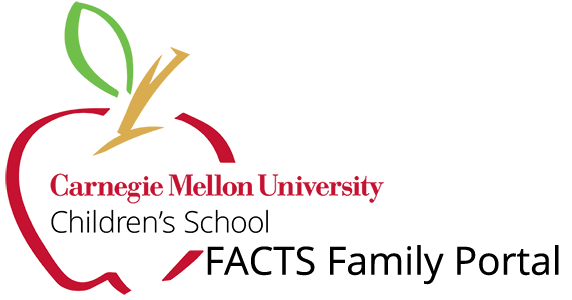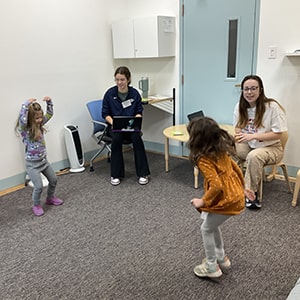Research & Teaching
The Children's School is the laboratory school for the Psychology Department in the College of Humanities and Social Sciences.
The Research Q&A Document designed for children's parents and guardians provides an overview of the laboratory procedures. The research consent form they sign provides additional detail in the format required by the Institutional Review Board. Sample Research Study Descriptions from 2008 to 2010 exemplify the types of investigations being conducted at the Children's School.
Faculty, research associates, graduate students, and senior honors students wishing to conduct research projects at the Children's School must first complete all of the Institutional Review Board requirements for their project, and then follow the Children's School Research Policies. Be sure to apply for the required Criminal Record Check and Child Abuse Clearance as soon as you contemplate conducting research involving child subjects because they take time to process. Directions for obtaining these security assurances are available on the CMU Human Resources website.
Students taking the Research Methods in Child Development course follow a modified set of Policies for Research Methods Projects and are not required to obtain security assurances because they always work with staff supervision and never work alone with children. These students ARE required to complete the IRB's education requirement re: ethical treatment of human subjects through the Collaborative Institutional Training Initiative (CITI) because it applies to all Carnegie Mellon University researchers. Please see the IRB website for directions and relevant web links. For the Research Methods courses, the Children's School Director submits a yearly project request for IRB approval and serves as a representative of the IRB for the purpose of approving specific student project proposals.
After all of the Psychology research and course projects have been scheduled, requests for course or individual projects from other departments and colleges will be considered. Projects involving Human Subjects Research are subject to the policies described above.
Policies for Non-Research Projects apply when the project does not meet the Institutional Review Board's definition of Human Subjects Research.
Typically, user tests conducted for the purpose of improving the design of products and not involving systematic investigation to develop generalizable knowledge fit this category. Similarly, projects involving gathering the children's opinions to guide the design process, taking photographs of children as a way to practice photography techniques, or inviting children to be an audience for an exhibition or performance are non-research projects.
What sort of research happens at the Children's School?
At the Children's School, some of the world's most renowned developmental and cognitive psychologists have explored what children know at an early age and how this knowledge influences later learning. They've tried to understand such processes as children's knowledge of numbers, problem-solving and memory for spatial locations.
Research at the Children's School is a positive experience for the child because children enjoy one-to-one contact with the researcher. Research is done in an informal, activity-based mode which does not disrupt the school day. The researcher shares the general results of the project with the teachers so that the knowledge may be integrated into the program.
In addition to the doctoral and post-doctoral students who conduct research studies at the Children's School, several renowned childhood development scientists, including Janet Davidson, Sylvia Farnham-Diggory, Carl Granrud, Mark Johnson, David Klahr, Brian MacWhinney, Robert Siegler, and Catherine Sophian have taken advantage of the school's unique setup. Over the years, research findings have produced interesting and sometimes surprising results. Following are just two examples:
Finger Counting's Effect on Math
Contrary to popular belief, finger counting can help children add and subtract. When a good student can't remember an answer from addition and subtraction tables, he or she counts fingers as a backup. But mediocre students have poor finger counting skills. Every teacher we've [talked to] has told us that telling children not to use their fingers doesn't work. We think children are right to do this because if you don't know the answer very well, then it's better to be right than wrong. – Excerpt from a study published in 1989 by Robert Siegler, psychologist at Carnegie Mellon University
Infant Recognition
Human infants as young as nine minutes old know something about faces. The study I've done suggests infants have some innate knowledge about faces. Although this knowledge may be very coarse, such as the infant being able to detect three blobs in the correct relative locations for the eyes and mouth, this knowledge is sufficient to ensure that some immature parts of the brain become specialized for processing more detailed information about faces. Prior to this study, it was thought infants could not do this. – Excerpt from a study published in 1991 by Mark Johnson, psychologist at Carnegie Mellon University






